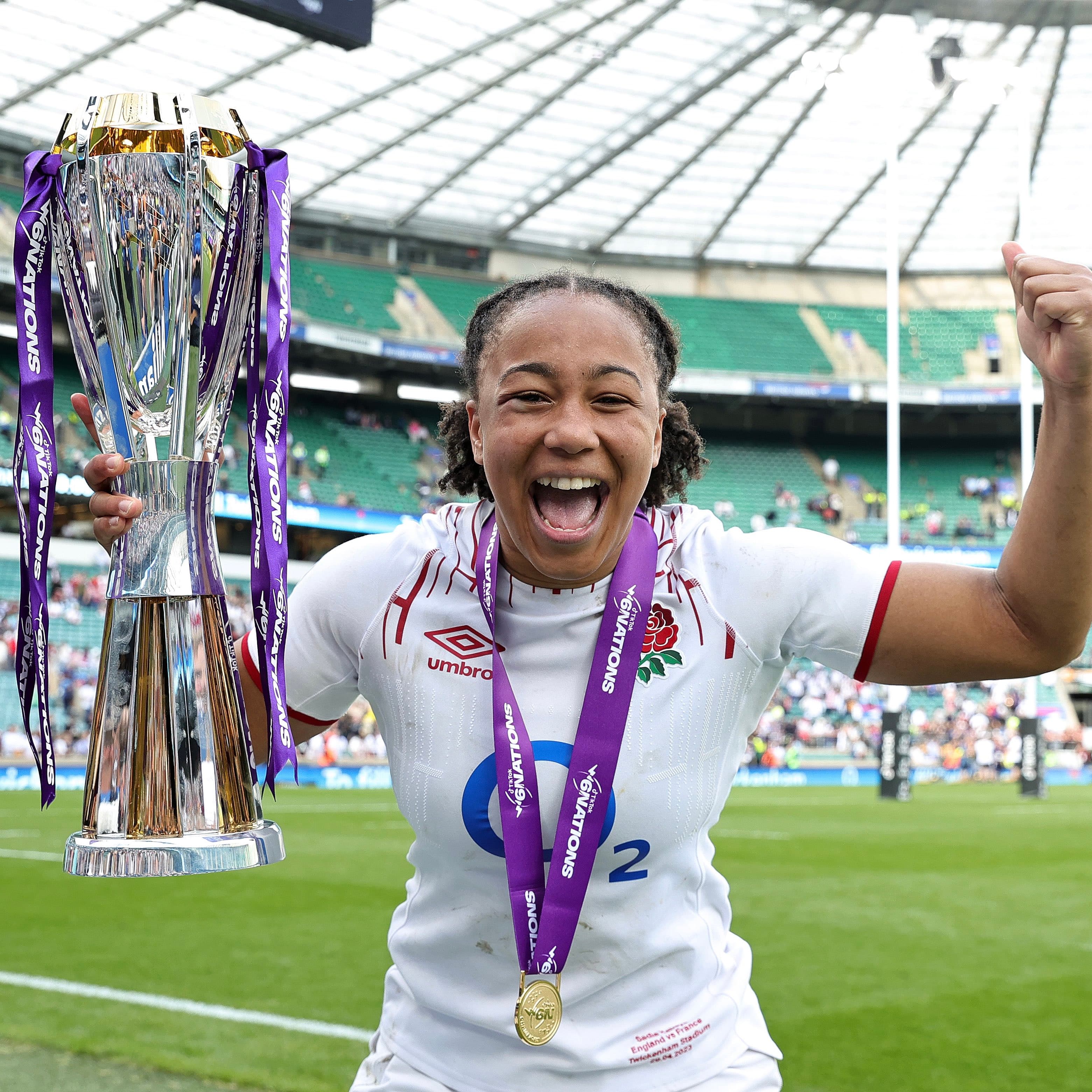“WE USE HAIR TO EXPRESS OURSELVES”
You’ve probably heard the 'rugby girl' stereotype. Being ‘rough and ready’ is the classic one, the stereotype that Sadia tells us she's all too familiar with.
But the reality is very different. For all you sporty girls out there, you'll know what Sadia means...
“You’ll find a lot of the girls like to look good on game day, because it makes them feel better when they play”
Players might choose to wear makeup, or have their hair in a preferred style, because it gives them confidence.
For Sadia, there’s another layer to this. The fact that she wears braids and other protective styles familiar to women in the black community.
In a sport where your hair, in Sadia's words, "ends up in places it's not supposed to", it hasn't always been easy to make her hair work in rugby.
She wants to use her own experience to break down one of the barriers that could deter black women from taking up rugby - their hair.
“AT SCHOOL, HAIR WAS NEVER A QUESTION”
Growing up in South London, Sadia was introduced to rugby at school.
She recalls the day one of her teachers came into the classroom and asked her to fill in for a game. Her instructions were to run forwards, and pass backwards. Wearing a pair of boots from lost property, she headed onto the pitch.
Fast-forward a few years, and Sadia is now a regular starter for England, who, by the way, have just been crowned Women's Six Nations winners. In the final, Sadia was awarded Player of Match.

Sadia holding the Women's Six Nations trophy, after England won the title. Credit: Getty
Sadia went to a predominantly black secondary school. At the time, how she styled her hair for rugby wasn’t at the top of her mind.
“Everyone I was playing with looked like me, had the same hairstyles as me”
The girls would go to games with their headscarves on to protect their hair. And Sadia would do the same. No one would question it, it was the done thing.
It was only when she joined her first Premiership club, Richmond, did she start to think about her hair, and how it would fit in with rugby.
“FOR THOSE BLACK GIRLS, IT WILL ALLOW THEM TO FEEL MORE COMFORTABLE”
A scrum cap is a piece of equipment used by some rugby players to protect their scalp and ears, helping prevent some of that “wear and tear” Sadia talks about.
But it’s not always been easy for Sadia to find a comfortable scrum cap, when she has her hair in certain styles.
That’s where the satin cap comes in.
Women in the black community often wear a satin bonnet or head scarf overnight, to keep their hair in place and protect it.
“Having a layer of satin within a scrum cap will stop that rubbing while we play”
Sadia says there is currently no one manufacturing scrum caps with a satin lining.
“ITS A HUGE THING FOR THE DIVERSITY OF THE GAME”
Sadia has been talking to former England player Shaunagh Brown and Bristol Bear's Simi Pam to brainstorm ideas for a satin scrum cap.
*As a side note - we spoke to Shaunagh Brown last year about body image and social media, you can find that interview here*
Shaunagh put out a message on social media about satin scrum caps, and apparently received a good response. Sadia had also written a column about hair in rugby, and how a scrum cap for afro hair might help black girls stick with the sport.
Since then, Sadia says a few companies have got in touch wanting to talk further about making satin scrum caps a thing.
“Even though it’s such a niche thing for the community, it’s a huge thing for the diversity of the game"
"WE HAVE THE OPPORTUNITY NOW TO CHANGE"
The work doesn’t stop with developing scrum caps for players with black hair.
Sadia goes into schools to inspire young girls from different communities and backgrounds to try rugby.
That’s where she realised that fostering inclusion is about focusing on the grassroots.
We chatted about what we can learn from the grassroots set up in women's football, and how there's still work to do to encourage diverse talent.
According to the PFA, 9.7% of footballers in the elite women’s game are from diverse ethnic backgrounds, compared to 43% of male players in the Premier League.
One reason for that is the location of women’s talent centres and academies, which are often found in suburban areas. This means they’re not accessible to girls from all communities, who might have to rely on parents taking them to practice, or on public transport across long distances.
This is something that is also highlighted in the RFU's recent Inclusion and Diversity Action Plan.
As women’s rugby continues to grow, and perhaps follow the trajectory of women's football, Sadia believes things can be done to prevent access to clubs becoming a barrier and shutting some girls out of rugby.
“We don’t want to have it in the same way that it is with football, and we have the opportunity now to change that and stop it from happening”